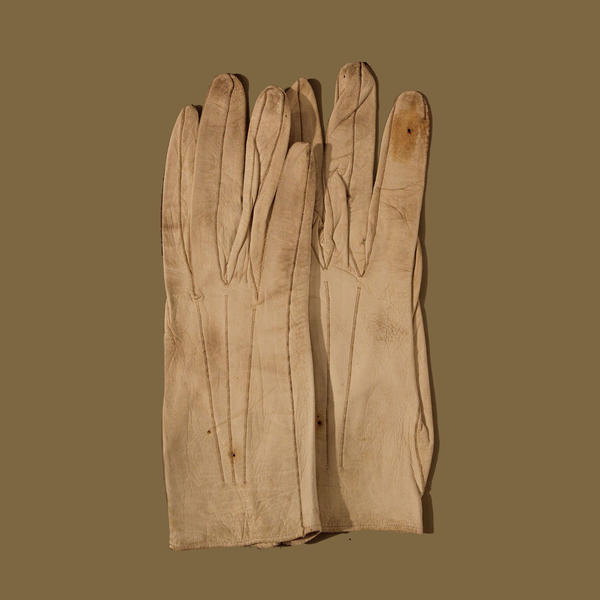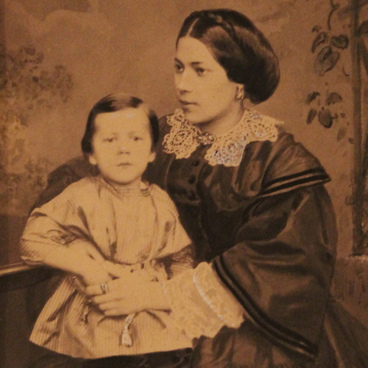“I want to love one woman only all my life… Let me have one love of my life, I do not want any other love”, Nicolay Chernyshevsky wrote in his diary, and his desire came true. His wedding to Olga Vasilyeva on April 29, 1853 was the biggest event of Nicolay Chernyshevsky’s life. The wedding ceremony was held in the Saratov Church of Lord the Savior. The church was a kind of family church for Chernyshevsky: his father and grandfather served in it and Nicolay Gavrilovich himself was baptized in that church. The wedding ceremony was performed by his godfather Fyodor Vyazovsky. Nicolay Chernyshevsky always celebrated his wedding anniversaries as one of the most special days in his life.
By the age of 25, the bridegroom was a blond haired myopic man of short stature with firm beliefs. He observed contemporary matrimonial relations and found them lacking harmony. He was far from alone in that conclusion. The crisis in the institute of marriage and family was a theme of literary writings by Alexander Herzen, Leo Tolstoy, Ivan Goncharov, Mikhail Saltykov-Shchedrin, and Fyodor Dostoevsky.
This is how Nicolay Chernyshevsky explained the causes of the critical situation and suggested the way out: ‘Women should be equal to men. However, if a stick has been bent to one side for too long, it should be bent to the opposite side in order to straighten up. This is what we see now: women are beneath men. Hence, every decent man should put his wife above himself. Such temporary imbalance is needed to set the ground for future equality’.
N.G. Chernyshevsky’s ideas for revamping the family system in line with the principles of women’s emancipation were reflected in his novel What is to be done? The novel impacted his own family life and the views of the young generation of the 1860s. Nicolay Chernyshevsky and Olga Vasilyeva had a good and enduring marriage. Though hardly idyllic, it survived 20 years of separation.
The wedding gloves from white kid leather worn by Nicolay Chernyshevsky at the wedding ceremony were preserved by his wife Olga Sokratovna. Most of the family relics were delivered to the museum at the time of its establishment in the 1920s after they were moved from St. Petersburg to the Chernyshevsky family home in Saratov. Since that time those relics have always been on the museum’s permanent display.
By the age of 25, the bridegroom was a blond haired myopic man of short stature with firm beliefs. He observed contemporary matrimonial relations and found them lacking harmony. He was far from alone in that conclusion. The crisis in the institute of marriage and family was a theme of literary writings by Alexander Herzen, Leo Tolstoy, Ivan Goncharov, Mikhail Saltykov-Shchedrin, and Fyodor Dostoevsky.
This is how Nicolay Chernyshevsky explained the causes of the critical situation and suggested the way out: ‘Women should be equal to men. However, if a stick has been bent to one side for too long, it should be bent to the opposite side in order to straighten up. This is what we see now: women are beneath men. Hence, every decent man should put his wife above himself. Such temporary imbalance is needed to set the ground for future equality’.
N.G. Chernyshevsky’s ideas for revamping the family system in line with the principles of women’s emancipation were reflected in his novel What is to be done? The novel impacted his own family life and the views of the young generation of the 1860s. Nicolay Chernyshevsky and Olga Vasilyeva had a good and enduring marriage. Though hardly idyllic, it survived 20 years of separation.
The wedding gloves from white kid leather worn by Nicolay Chernyshevsky at the wedding ceremony were preserved by his wife Olga Sokratovna. Most of the family relics were delivered to the museum at the time of its establishment in the 1920s after they were moved from St. Petersburg to the Chernyshevsky family home in Saratov. Since that time those relics have always been on the museum’s permanent display.



